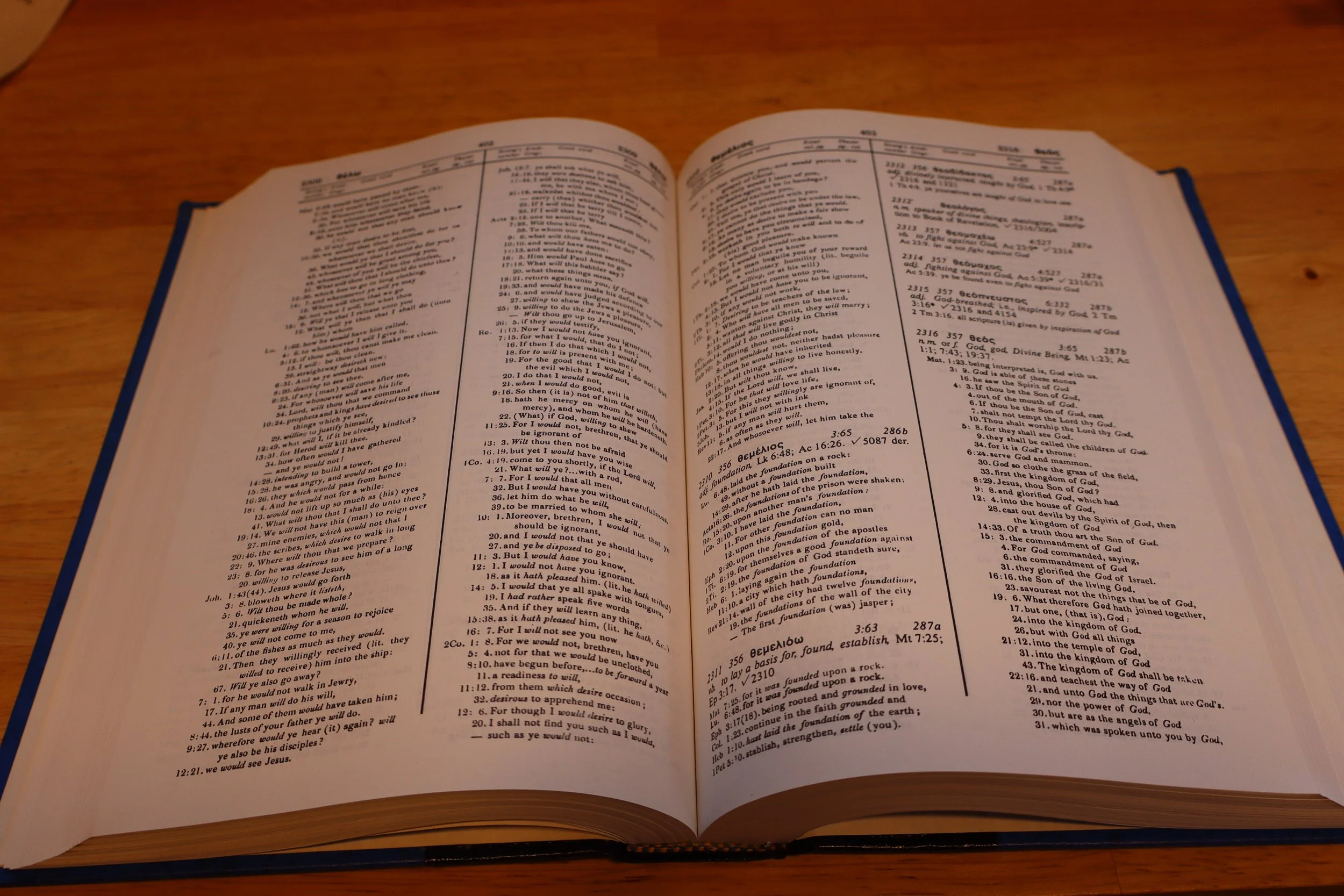Unlocking Biblical Greek: The New Englishman's Greek Concordance as a Powerful Study Tool
The New Englishman's Greek Concordance" by George V. Wigram, with contributions from Jay P. Green, Sr., stands as a monumental aid for biblical scholars, theologians, and students eager to delve into the original language of the New Testament. This article explores the capabilities, significance, and application of this concordance in enhancing biblical study.
Originally published in an updated form from Wigram's earlier work, this concordance is designed to facilitate the study of the Greek New Testament by listing every Greek word in alphabetical order, along with references to where each word appears in the King James Version (KJV) of the Bible.
Wigram's The New Englishman’s Greek Concordance and Lexicon is a classic resource for students of biblical Greek, combining two essential tools:
The Greek Concordance:
A reverse concordance that organizes Greek words according to their occurrences in the New Testament, providing references and contexts for each usage.The Greek-English Lexicon:
A lexicon that offers brief definitions of the Greek words, often with theological or exegetical notes. It aims to give users a better understanding of how each word is used throughout the New Testament.
This edition is also coded with the Strong’s numbers.
Strengths
Systematic Organization:
Wigram's concordance is organized by Greek root words, allowing users to trace a word’s meaning and development throughout the New Testament. Unlike standard English concordances, this tool emphasizes the original language, making it great for those studying biblical Greek.Comprehensive Coverage:
Every Greek word used in the New Testament is indexed, making it a comprehensive reference for students, pastors, and scholars looking to explore the full range of a word's usage. If you’re looking to find other instances where a Greek word is used, this is a great resource.User-Friendly Format:
While many Greek concordances require familiarity with advanced Greek grammar, Wigram's work is accessible, even for intermediate students of Greek. By linking Greek words directly to their New Testament contexts, it allows users to engage with the text without needing advanced linguistic expertise.Cross-Referencing:
The concordance includes extensive cross-references between Greek words and their English translations, helping users understand the nuances of translation and interpretive choices in different Bible versions.
Who Would Benefit from Wigram's Concordance and Lexicon?
Students of Biblical Greek: Ideal for those beginning their study of New Testament Greek who need a practical, systematic guide to Greek vocabulary.
Teachers and Preachers: Useful for sermon preparation, especially when delving into the original language of the New Testament to enrich biblical interpretation.
Bible Study Enthusiasts: Those interested in deepening their understanding of the New Testament through its original Greek text.
Key Features:
Alphabetical Listing: Every Greek word from the New Testament is presented in Greek alphabetical order, making it easy to locate specific terms.
Scriptural References: Under each Greek word, there's a list of all the verses in the KJV where that word appears, with the English translation italicized for clarity.
Strong's Numbers: Each Greek word is coded with Strong's Concordance numbers, allowing users to cross-reference with other biblical study tools like Strong's Exhaustive Concordance for deeper lexical analysis.
Lexicon Entries: A significant enhancement is the inclusion of brief lexicon entries for each Greek word, providing definitions, etymology, and scriptural context, essentially embedding a concise lexicon within the concordance.
Cross-References: It also includes references to other significant Greek lexicons and theological dictionaries, enriching the study by connecting users to broader scholarly resources.
Significance in Biblical Studies:
Word Study: This concordance is invaluable for conducting word studies, allowing users to see how a particular Greek word is used throughout the New Testament, thus gaining insights into its semantic range and theological implications.
Translation Comparison: By linking Greek words to their English translations in the KJV, it aids in understanding translation choices and nuances, which can be critical for exegetical work or translation projects.
Theological Development: Tracing the use of key theological terms can illuminate how concepts develop or are understood across the New Testament, influencing doctrine and interpretation.
Language Learning: For students of Koine Greek, this tool serves as a practical way to build vocabulary and understand Greek syntax in context.
User Experience and Impact:
Ease of Use: Despite its depth, the concordance is user-friendly, designed for those with limited Greek knowledge, thanks to its coding system and English references.
Compact Study Tool: By combining aspects of a concordance and lexicon, it reduces the need for multiple books, making it a compact, go-to resource for study sessions.
Scholarly and Personal Use: It's utilized in academic settings, seminaries, and by laypeople interested in personal Bible study, highlighting its versatility.
"The New Englishman's Greek Concordance" by George V. Wigram remains a cornerstone for anyone serious about studying the Greek New Testament. Its structure not only aids in linguistic and theological exploration but also democratizes access to the complexities of biblical Greek. Whether for academic research, sermon preparation, or personal enrichment, this concordance is a testament to the enduring value of understanding the Bible in its original language, offering a bridge between ancient texts and contemporary study.
Wigram's The New Englishman’s Greek Concordance and Lexicon remains a valuable tool for anyone seeking to engage with the New Testament in its original language. Its systematic organization and user-friendly format make it an excellent resource for beginners and intermediate students. Wigram's work stands as a classic reference that continues to aid readers in exploring the richness of biblical Greek.

